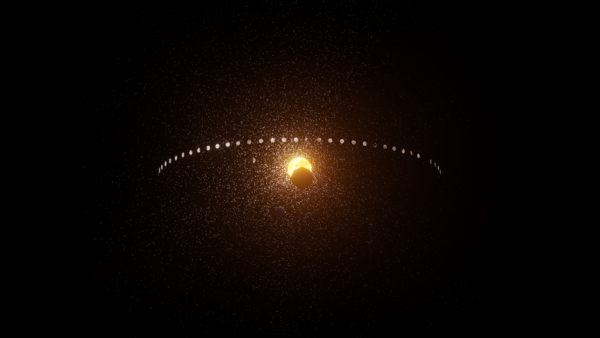Dyson Swarms (A1-0)
The Dyson Swarms consist of a shell of solar collectors or habitats around a star, so that all, or at least a significant amount, of the star's output energy will hit a receiving surface where it can be used.
Dyson Swarms collect vast amounts of energy, which can be used to support many small habitats, or a number of larger habitats or inhabited megastructures. Often, however, the energy is used to support computation, and most of the high Archai use Dyson swarms or shells as parts of their processing substrate.
Configurations

Spherical Swarms
A swarm comprised of at least 10.000 energy collector elements (although most have hundreds of thousands if not millions of elements) in progressively inclined orbits that create a sphere-shaped volume around the star, typically a million kilometers thick.
Dyson swarms vary in distances from the primary, as well as individual habitat or structure density. As far as reasonably comfortable (baseline friendly standards) habitats are concerned, most of the swarm might be a distance between 108 and 228 million kilometers around a standard star. Since part of the purpose of all this is to maximize interception of sunlight, most tend to be on the smaller side of this range. The average distance between the two extremes is roughly 1/3 of an AU or about 31 million miles.